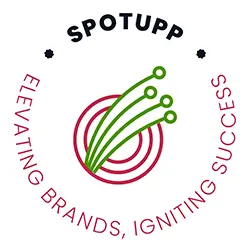Introduction
Google has long dominated the search engine market, and with its recent innovations in AI, it’s once again reshaping how the web is crawled and indexed. The introduction of Google’s AI crawler, particularly the Google-CloudVertexBot, has raised questions and concerns among webmasters, SEOs, and content creators. This article delves into the functionality of Google’s new AI crawler, its implications for website owners, and provides case studies and best practices to navigate this evolving landscape.
1. The Evolution of Google’s Crawlers
Google’s journey in search engine technology began with the launch of Googlebot, its original web crawler designed to index the vast expanses of the internet. Over time, Googlebot evolved to become more sophisticated, focusing on understanding context, user intent, and providing relevant search results.
With the rise of AI and machine learning, Google introduced new bots to cater to different needs, including crawlers for advertising, mobile-first indexing, and now, AI-driven crawlers like Google-CloudVertexBot. The key difference with this new AI crawler is its specific role in serving Google’s Vertex AI product, which involves ingesting website content for commercial AI clients.
2. Google-CloudVertexBot: How It Works
The Google-CloudVertexBot is a new addition to Google’s arsenal of crawlers. Unlike traditional crawlers tied to search engines, this bot is designed to crawl websites on behalf of commercial clients using Google’s Vertex AI. The primary purpose is to gather data that can be used to build AI agents capable of advanced data analysis, recommendations, and insights.
a. Basic vs. Advanced Website Indexing
Google’s documentation on the Google-CloudVertexBot outlines two types of website indexing:
- Basic Website Indexing: This involves the general indexing of public website data. It’s less controlled and doesn’t require domain verification from the site owner.
- Advanced Website Indexing: Requires domain verification and offers more granular control over what data is indexed. It also imposes quotas on how much data can be indexed.
While the bot is supposed to crawl only sites that have been verified by their owners, the documentation is somewhat ambiguous, leaving room for interpretation and potential concerns.
3. The Impact on Website Owners
The introduction of Google-CloudVertexBot presents both opportunities and challenges for website owners. On the one hand, it allows businesses to integrate their data with Google’s AI systems, potentially gaining advanced insights and better customer engagement. On the other hand, there are concerns about privacy, data control, and the possibility of the bot crawling content that site owners might not want indexed by AI systems.
a. Privacy and Control
One of the major concerns with AI crawlers is privacy. Website owners may not want their content to be used for AI models, especially if it could lead to content replication or misuse. The unclear guidelines in Google’s documentation exacerbate these concerns, as it’s not always clear what content will be crawled and how it will be used.
b. Managing Crawler Traffic
Another challenge is managing the increased traffic from AI crawlers. Websites that experience high levels of crawling can face performance issues, increased server costs, and potential disruptions in user experience. This is particularly true for sites that rely on real-time data or have limited server capacity.
4. Case Studies
Case Study 1: The iFixit Dilemma
iFixit, a popular website that offers free repair guides for electronics, faced a significant challenge with Google’s AI crawler. The site relies heavily on Google Search traffic, but the introduction of the Google-CloudVertexBot raised concerns about how their content would be used. Blocking the crawler could lead to a drop in search traffic, but allowing it might mean losing control over how their content is utilized in AI models.
iFixit opted to monitor the bot’s activity closely, allowing it while setting strict limits via robots.txt to prevent overloading their servers. This approach allowed them to maintain their visibility in search results while protecting their content from being overly exploited by AI systems.
Case Study 2: The Reddit-Google Partnership
Reddit’s partnership with Google highlights the complexities of dealing with AI crawlers. Google’s deal with Reddit allowed its AI to index and utilize vast amounts of user-generated content from Reddit, which in turn drove increased traffic to the platform. However, this partnership also set a high bar for other companies looking to negotiate similar deals, leaving smaller players struggling to protect their content from being absorbed by AI without fair compensation.
Case Study 3: The Impact on Small Publishers
Small publishers, like independent blogs and niche content websites, have been particularly vulnerable to the impacts of Google’s AI crawler. These sites often rely on Google Search for a significant portion of their traffic, but the advent of AI crawlers poses a risk. If these sites block AI crawlers to protect their content, they might lose valuable search visibility, leading to decreased traffic and revenue.
One such publisher, a small tech blog, noticed an increase in bot traffic after the introduction of Google-CloudVertexBot. Concerned about server costs and the potential misuse of their content, they decided to block the bot entirely. This decision resulted in a noticeable drop in search engine traffic, forcing the publisher to reconsider their strategy and find a balance between content protection and search visibility.
5. Best Practices for Website Owners
To navigate the challenges posed by Google’s AI crawlers, website owners should adopt a proactive approach that balances content protection with the need for search visibility.
a. Implementing Robots.txt Rules
Robots.txt is a critical tool for controlling how crawlers interact with your site. By setting specific rules, you can limit the access of AI crawlers like Google-CloudVertexBot while allowing traditional crawlers like Googlebot to continue indexing your content for search engines.
Example:
User-agent: Google-CloudVertexBot
Disallow: /
User-agent: Googlebot
Allow: /
This setup ensures that Google’s AI crawler cannot access your site, while Google’s search crawler can continue to index your content for search results.
b. Monitoring Crawler Activity
Regularly monitoring your server logs for crawler activity can help you understand the impact of different bots on your site. Tools like Google Search Console and third-party analytics platforms can provide insights into how often your site is being crawled and by which bots. If you notice an increase in traffic from AI crawlers, you may need to adjust your robots.txt settings or consider additional server resources to handle the load.
c. Verifying Domain Ownership
For those opting to use Google’s Advanced Website Indexing, verifying domain ownership is crucial. This not only gives you more control over how your content is indexed but also ensures that your site is protected from unauthorized crawling.
6. Legal and Ethical Considerations
As AI crawlers become more prevalent, the legal and ethical implications of their use are increasingly important. Website owners must consider the potential for content misuse, data privacy concerns, and the ethical implications of allowing AI systems to use their content.
a. Data Privacy Laws
With the rise of data privacy laws like the GDPR in Europe and the CCPA in California, website owners must be vigilant about how their content and user data are accessed by AI crawlers. Ensuring that your site complies with these regulations is essential to avoid legal repercussions.
b. Ethical Use of Content
Ethically, website owners should consider the broader implications of allowing AI crawlers to access their content. This includes the potential for AI systems to replicate or misuse content, as well as the impact on smaller publishers who may not have the resources to protect their content effectively.
7. The Future of AI Crawling
As AI continues to evolve, the role of AI crawlers like Google-CloudVertexBot is likely to expand. This will bring new challenges and opportunities for website owners, particularly in terms of how content is managed, protected, and utilized by AI systems.
a. Integration with AI Systems
One possible future development is the deeper integration of AI crawlers with content management systems (CMS). This could allow for more granular control over what content is accessible to AI crawlers, enabling website owners to optimize their sites for both search engines and AI systems.
b. AI-Driven Content Personalization
AI crawlers could also play a key role in the future of content personalization. By analyzing data from AI crawlers, businesses could deliver more personalized experiences to their users, improving engagement and conversion rates.
Conclusion
Google’s AI crawler, Google-CloudVertexBot, represents the next step in the evolution of web crawling. While it offers new opportunities for integrating with AI systems, it also presents challenges in terms of privacy, control, and ethical considerations. By understanding how these AI crawlers work and adopting best practices, website owners can navigate this new landscape effectively, protecting their content while maximizing their visibility in search results.
Additional Resources
- Google Search’s guidance about AI-generated content
- Innovate faster with enterprise-ready AI, enhanced by Gemini models
Frequently Asked Questions
Yes, you can block Google-CloudVertexBot specifically using robots.txt, while still allowing Googlebot to index your site for search engine rankings.
Use tools like Google Search Console or your server logs to track crawler activity. You can identify the bots accessing your site and adjust your settings accordingly.
Ensure compliance with data privacy laws like GDPR and CCPA. It’s important to understand how your content and user data are being used by AI crawlers to avoid legal issues.
Googlebot is the traditional web crawler used for indexing content for Google’s search engine. Google-CloudVertexBot, on the other hand, is specifically designed to crawl websites for data ingestion into Google’s Vertex AI products, which are used for AI-driven applications and services.
Yes, you can configure your robots.txt file to allow Google-CloudVertexBot access to specific sections of your website while blocking others. This enables you to control which parts of your content are available for AI indexing.
Google-CloudVertexBot can increase your server load due to its crawling activity. It’s important to monitor your server performance and adjust crawl rate settings if necessary to prevent performance issues, especially on sites with limited resources.
If you observe unusual or excessive crawling activity from Google-CloudVertexBot, you can adjust your robots.txt file to limit or block the bot’s access. Additionally, you can reach out to Google’s support for further assistance.
You can check your server logs for the user-agent “Google-CloudVertexBot” to verify if and when the bot has crawled your site. Google Search Console may also provide insights into the crawling activity of different bots.
Blocking Google-CloudVertexBot should not directly affect your site’s visibility in Google Search, as this bot is separate from Googlebot, which is responsible for indexing content for search results.
Best practices include setting up a clear and specific robots.txt file, verifying your domain if using advanced indexing, monitoring crawler activity, and ensuring compliance with data privacy laws. Additionally, consider the ethical implications of allowing AI crawlers to access and use your content.


